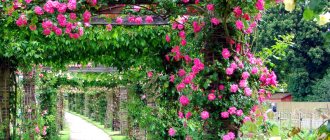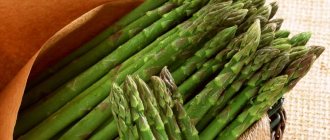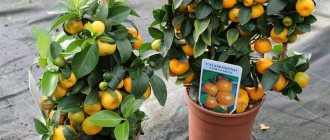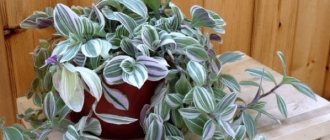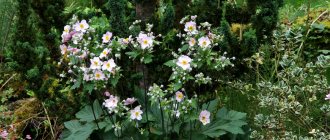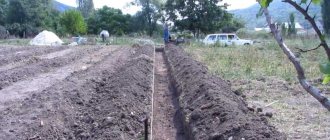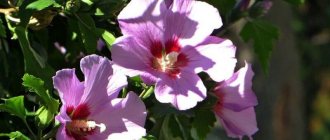Wanting to make their plot beautiful, every owner strives to choose plants that will ultimately create a harmonious composition. Rowan-leafed mountain ash will be an excellent way to decorate your home area. The bush does not require complex care and takes root in any garden plot.
Just like rowan
Origin and appearance
Fieldfare shrub (lat. Sorbaria) belongs to the Rosaceae family. The plant is found in many Asian countries.
The genus is represented by only 10 varieties of culture. The name that the bush has comes from “sorbus”, which means “rowan” in Latin. This name is due to the fact that the leaf blades of this crop are almost identical to mountain ash. The only difference is that the rowan leaf is usually somewhat larger.
Amazingly beautiful fieldfare flowers can be the best decoration for your garden plot
Fieldfare has been planted as an ornamental plant for quite a long time - approximately since the 18th century.
The plant is characterized by twisting gray-yellow stems. The bush itself can grow up to 3 meters. The flowers of the ornamental shrub form paniculate inflorescences in the form of a pyramid, consisting of a large number of small flowers. The latter can be white or cream in color.
Conclusion
This ornamental shrub is a profitable purchase for any site, capable of beautifying the area. Fieldfare is designed to be a bright accent in the garden, whether it grows in a group or graces the lawn alone. If you want the bush to delight with bright colors from early spring until the leaves fall, prune after flowering and then feed the plant.
A little more attention!
Do you think it’s worth betting on such an ornamental foliage plant? No matter how unpretentious it may be, part of the care is a rather labor-intensive process - pruning. In any case, it is necessary to remember about the active growth of the plant. To prevent young shoots from taking over the surrounding space, the shallow roots of the bush will have to be surrounded with a protective ring.
Fieldfare in the landscape
Rowan leaf, like chokeberry, is actively used in landscape design by both professionals and amateurs.
Tamarix shrub - description of species and varieties
Its white and beige flowers look very beautiful in any composition. The plant goes well with almost all flowers and shrubs. Most often, a shrub similar to rowan is used in the following cases:
- As the center of a flower arrangement surrounded by different flowers.
- As part of a hedge.
- As a companion to tall, large trees (it hides a long trunk with its foliage).
- In combination with all kinds of coniferous trees.
Important! Beekeepers give the rowan shrub a particularly high rating, since the plant is an excellent honey plant.
Varieties for the middle zone
Red viburnum is a shrub or tree - description
Pallas and Sam varieties are suitable for planting in the climatic conditions of central Russia.
Pallas's Fieldfare
The variety grows in Siberia, the Far East, and also on the slopes of the Alpine mountains. This suggests that the plant is perfectly adapted to both harsh conditions and sudden temperature changes.
Rowan leaf does not grow too tall - up to 1.2 meters. It is characterized by a very lush round shape. The leaf plates are quite large - up to 15 cm, placed on the petiole in up to 15 pairs and have a dark green color. The inflorescences represent many white or cream-colored buds. Their diameter can be up to 1.5 cm.
Fieldfare Sam
The Sam variety has a round, compact shape and grows to a height of no more than 80 cm. The foliage of the shrub has a light green tint with a reddish or bronze tint. It blooms with white buds, which are collected in slightly elongated inflorescences. The stamens of the flowers are twice as long as the petals, which gives the shrub a particularly elegant appearance.
Planting in open ground
Planting a shrub with leaves like rowan in open ground is not difficult.
What is needed for planting
All that is required to plant a crop in open ground is basic knowledge about the plant and its needs and the desire to grow a beautiful shrub.
Even a child can cope with planting fieldfare
Another point that you need to pay attention to is the correct choice of time for planting the bush. As a rule, planting should be done in early spring before the sap begins to flow or in the fall after the leaves have fallen.
Where to plant
Since fieldfare is a largely shade-loving plant, it should not be placed in open sunlight. The shrub will feel much more comfortable in the shade. That is why the crop is often planted under high villages.
As for soil, any type of fertile soil will do. The plant will feel equally comfortable both in damp and loose soil and in dense clay soil.
Planting step by step
Planting a bush in open ground involves performing a number of steps:
- Dig a hole in open ground about 40 cm deep.
- The bottom of the pit is covered with drainage material.
- A small amount of planting soil is poured onto the drainage.
- Nitrogen-containing fertilizer is added to the soil in the amount recommended by the manufacturer.
- A seedling is placed in the hole.
- Gently sprinkle the plant with soil and tamp it lightly.
- A neat hole is made near the trunk to prevent moisture from spreading when watering.
- Water the seedling.
Transfer
When the mountain ash begins to interfere with other crops or has grown very large, it is transplanted to a new place. Transplantation is performed no more often than once every 3 years. During transplantation, the bush is immediately divided if necessary. This is how fieldfare can be propagated, for example, to create a hedge.
The process of transplanting and dividing an adult bush:
- A planting hole is dug in the area chosen for the plant. Its depth is at least 50 cm if the bush is young, and up to 70 cm for an adult bush. Diameter – up to 70 cm;
- At the bottom of the recess, you need to lay a layer of pebbles or pieces of brick of 6-7 cm for drainage;
- A soil mixture is prepared, consisting of leaf compost, humus, soil and a mineral complex for garden crops. All varieties of mountain ash can be replanted and divided into small bushes;
- The bush is carefully dug out using a bayonet shovel. If you need to divide it into parts, then use a sharp knife to divide it into tubers. Each division should have buds and developed shoots;
- The cut site must be treated with crushed activated carbon or a root formation stimulator;
- Divided bushes are placed in new planting holes at a distance of 1 m;
- The holes with the divisions are sprinkled with soil mixture and watered abundantly. The root collar is not sprinkled; it must be above the ground level.
After the water is absorbed, add soil if necessary and mulch.
Reproduction of fieldfare
Most often, fieldfare is propagated in one of the following ways:
- cuttings;
- from layerings.
The easiest way to propagate fieldfare is by cuttings.
Cuttings
The description of propagation by cuttings does not involve particularly complex manipulations. Therefore, the method is used in practice more often than others. Cuttings are taken from strong woody stems. Their length should be 20-30 cm. For rooting, the cuttings are planted in a container with soil. Next, all that remains is to carefully ensure that the soil remains moist throughout the entire process of rooting the future shrub.
Important! You can understand that the rooting of the cuttings was successful by the beginning of the growth of the tops.
From layerings
Propagating fieldfare from layering is quite easy. To do this, in the spring, take a long and (necessarily!) completely healthy stem. It is carefully bent to the ground so that the buds are in contact with the ground. In this position, the stem is fixed by covering it a little with earth. It is very important that the top is on the surface. After a while, the cuttings will take root; at the end of summer, they will need to be cut off from the mother plant and replanted.
Fieldfare shrub does not create any particular problems in terms of planting and care. In order for the cultivation to be successful and the plant to begin to bloom, you need to follow some rules regarding watering, feeding and preparing the plant for winter.
Description
In the wild, the plant is found in Japan, Siberia, Korea and China. Basically, the culture grows on the coastal slopes of rivers and forest edges, forming vast thickets and thickets. Under natural conditions, the bushes grow up to two meters and are distinguished by gray-brown foliage. In appearance, it strongly resembles rowan, but the tips of its leaves are more pointed.
Consider the appearance features of the fieldfare "Sam".
The crown of the bush is lush, spreading, but neat. Its circumference is about 4 m, and its height is 2-3 m. The branches are straight, the leaves are 25 cm long and have 12 pointed leaves of a light green color when blooming. Closer to autumn they turn yellow and red. The odd-pinnate foliage is as valuable a decorative ornament of the variety as the flowers of the fieldfare. The long pyramidal inflorescences consist of small shaggy white flowers that emit a pleasant aroma; their length is 25 cm. The floral smell is so fragrant that it can attract many insects around the plant. Deciduous shrub has a highly branched root system, forming many root children
It is located in the surface layer of soil, so when planting it is important to take this circumstance into account and not plant other plants nearby. Fieldfare is covered with leaves earlier than other crops and looks elegant, preserving the beauty of the crown from spring to late autumn. The plant looks especially luxurious during flowering, although it does not last long - from 15 to 30 days. The beautiful appearance of the bush is maintained by constantly growing young shoots
The variety begins to bloom upon reaching 2-3 years of age. Fieldfare fruits are fused leaflets - simple polysperms in a dense leathery shell; they are not decorative, so it is better to remove the inflorescences after flowering.
The plant is not too demanding on the quality of the soil, it is highly winter-hardy (withstands frosts down to -40 degrees), but needs constant moisture. Rowan-leaf “Sam” is a crop with pronounced phytoncidal properties that not only tolerates gas pollution well, but also cleanses the air space around it from harmful impurities. The species develops and grows quickly; in one place the bush can live up to 20-30 years, but, of course, with normal care.
Care
Watering
Fieldfare is an unpretentious plant and is easy to care for. But it cannot do without regular watering. The culture does not tolerate drying out very well. It is especially important to moisten the soil immediately after planting.
On average, a bush needs two abundant waterings (2 buckets of water for each bush) within a month. If the summer is hot and dry, it is recommended to double the number of procedures performed.
Important! It is recommended to water young plants more often than mature ones. They require more water to grow.
Top dressing
Fieldfare vitally needs regular application of organic fertilizers to the soil. You can add organic matter directly to the surface of the tree trunk circle in small portions.
Among the mineral compounds, the bush needs nitrogen, potassium and phosphorus. It is allowed to add useful elements to the soil in the form of granules without first dissolving them in water. For 1 square meter of planting, 20 grams of universal mineral-containing fertilizer is sufficient.
During flowering
The plant does not require any special care during the flowering period. It is enough to ensure that the soil directly under the bush never dries out, and from time to time (as it dries) remove wilted inflorescences.
At the end of flowering
After the fieldfare has completely bloomed, all inflorescences and fallen leaves are removed. The number of waterings is reduced to a minimum.
Preparing for winter
Due to the high level of frost resistance, fieldfare does not need to be prepared for the winter period - it can withstand even the most severe frosts without insulation.
Fieldfare is a very beautiful and easy-to-care plant.
Trimming
Fieldfare is pruned for sanitary purposes in early spring, removing damaged branches. The bareness of the shoots from below and the drying of the tops is a sign of aging of the branches; they are cut out to rejuvenate them. Thickening leads to the formation of weak, thin and rapidly aging branches, so regular thinning is necessary. You can maintain a given crown height and shape, as the plant tolerates pruning well. Strong anti-aging pruning is recommended, the so-called planting “on the stump”. To prevent excessive growth, remove root shoots.

